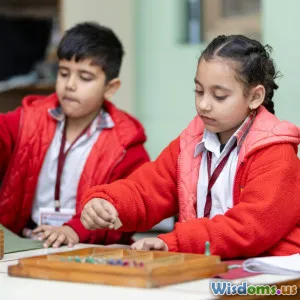
Learning through Play in Education
6 min read Unlock the power of learning through play to boost creativity, cognitive skills, and engagement in education. (0 Reviews)
Learning Through Play in Education: Unlocking the Power of Play for Smarter Learning
Education has long been dominated by rigid structures, rote memorization, and standardized testing. Yet, recent research and innovative teaching philosophies reveal a powerful agent for transforming how children and adults absorb information: play. Learning through play isn’t just child’s play—it’s an essential vehicle for creativity, critical thinking, and social development that smart learning environments must embrace.
Why Learning Through Play Matters
Imagine a classroom where children eagerly explore, experiment, and discover concepts, not because they are told to, but because their curiosity propels them. Learning through play enables this natural impulse, creating a conducive atmosphere where skills develop organically.
Play stimulates cognitive processes such as executive functions—planning, attention, working memory. Dr. Stuart Brown, founder of the National Institute for Play, emphasizes, “Play is the brain’s favorite way of learning.” This approach fosters a deep, lasting understanding rather than superficial memorization.
The Science Behind It
Studies from the American Academy of Pediatrics show that play supports development in language, literacy, and executive function, crucial for school success. Neuroscientific research reveals that play triggers dopamine release, enhancing brain plasticity—improving how learners process and store knowledge.
Forms of Learning Through Play
Learning through play isn’t just unstructured fun; it ranges from free-play to guided activities. Some key forms include:
1. Free Exploration
Where learners interact at their own pace, making choices about materials and goals—ideal for creativity and problem-solving.
2. Role-Playing and Simulation
Children pretend to be scientists, doctors, or historical figures, internalizing abstract concepts through scenario-based learning.
3. Constructive Play
Building blocks, puzzles, and model kits help develop spatial reasoning, planning, and motor skills.
4. Guided Play
Teachers design activities with clear learning objectives but allow students to direct their engagement within that framework.
5. Digital Play
Interactive educational games and apps offer dynamic learning experiences, blending technology with play.
Real-World Examples of Play-Based Learning
The Reggio Emilia Approach
Originating in Italian preschools, this approach centers on child-led exploration and creativity, employing open-ended projects and collaborative play.
Finland’s Education Model
Promoting less standardized testing and more playtime, Finland boasts top global literacy scores, linking play’s role to success.
The LEGO Foundation
By investing heavily in play-based learning initiatives globally, LEGO pushes for educational policies that integrate play into formal curricula.
Technology Meets Play: Minecraft Education Edition
Used worldwide, this digital sandbox facilitates collaborative problem-solving, creativity, and coding skills in an immersive environment.
Benefits That Extend Beyond Academics
Beyond knowledge acquisition, play nurtures crucial life skills:
- Social Competence: Collaboration, empathy, and communication through group play.
- Emotional Resilience: Managing risks and failures in safe play settings builds confidence.
- Physical Development: Movement-based games enhance coordination and health.
According to a 2018 UNESCO report, integrating play in early childhood education leads to better mental health and reduced behavior problems.
Implementing Play in Schools: Practical Strategies
Teacher Training
Educators must be equipped to facilitate play with intent, balancing freedom with learning outcomes.
Curriculum Integration
Design lessons that incorporate playful elements without sacrificing structure, e.g., project-based learning modules.
Environment Setup
Flexible classrooms with accessible materials, outdoor spaces, and technology-enabled zones encourage spontaneous play.
Parent and Community Involvement
Awareness campaigns help families value play alongside academic achievement, creating consistent reinforcement.
Assessment Innovation
Shifting from traditional exams to portfolios, observations, and reflective journals capture learning progress during play.
Addressing Challenges
Opponents argue play takes valuable academic time or lacks rigor. However, educators point to studies showing improved standardized test performance and long-term retention when play is incorporated meaningfully.
Accessibility can be a hurdle too—schools in underprivileged areas might struggle to provide resources. Partnerships with NGOs and governments can bridge this gap.
Conclusion: Embracing Play as a Catalyst for Smart Learning
Harnessing learning through play means aligning education with the natural ways humans thrive intellectually and socially. It transforms learning from a passive reception of facts into an active, joyful journey of discovery.
As Dr. Peter Gray, research professor of psychology, eloquently puts it: “Play is not frivolous: it is necessary. Play is how children learn to be smart, adaptable, and resilient.”
Educators, policymakers, and parents must champion playful learning—not as a break from education, but as its vibrant core. By doing so, we prepare learners not only to memorize but to invent, collaborate, and innovate—a necessity for thriving in the complexities of the 21st century.
Ready to transform how you or your organization approach education? Start weaving play into learning experiences and witness profound impacts on engagement and achievement.
Rate the Post
User Reviews
Popular Posts





















